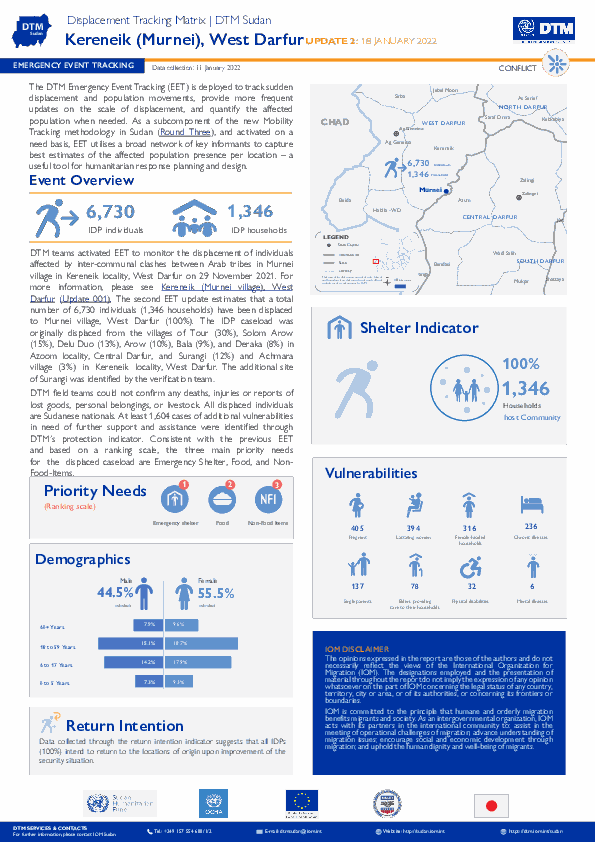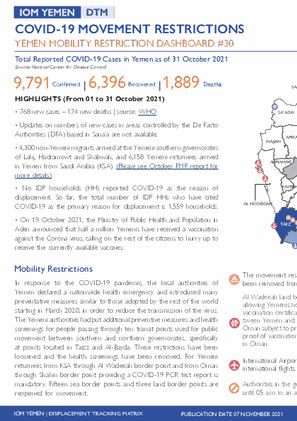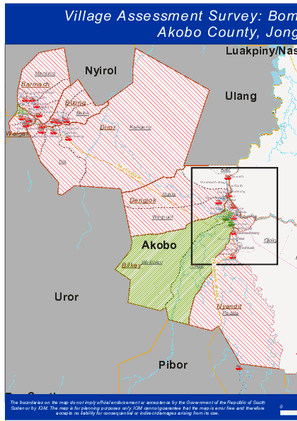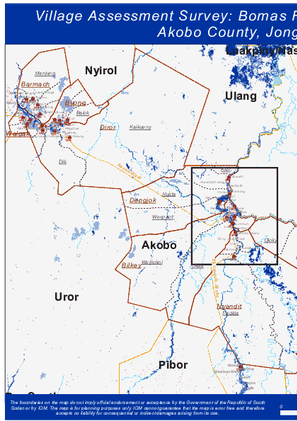-
Countries
-
Data and Analysis
-
Special Focus
-
Crisis Responses

Contact
DTM Pakistan, iomisbdtmremapteam@iom.int
Language
English
Location
Pakistan
Period Covered
Dec 19 2021
Dec 31 2021
Activity
- Flow Monitoring
IOM Pakistan collects data on the outflows of undocumented Afghan migrants at the Torkham and Chaman border crossing points in an effort to better understand the migration movements of undocumented Afghan migrants returning to Afghanistan from Pakistan. This exercise is part of the European Union funded project “Displacement Tracking Matrix Regional Evidence for Migration Analysis and Policy (DTM REMAP)”.
From 19 December to 31 December 2021, 2,623 undocumented Afghan migrants returned to Afghanistan, including 227 through the Torkham border point and 2,396 through the Chaman border point. During the reporting period, border authorities facilitated the return of 40 individuals due to the lack of legal documentation to remain in Pakistan. Therefore, information concerning these 40 individuals is not included in the report analysis.

Contact
DTM Sudan; dtmsudan@iom.int
Language
English
Location
Sudan
Snapshot Date
Jan 11 2022
Activity
- Mobility Tracking
- Event Tracking
The DTM Emergency Event Tracking (EET) is deployed to track sudden displacement and population movements, provide more frequent updates on the scale of displacement, and quantify the affected population when needed. As a subcomponent of the new Mobility Tracking methodology in Sudan (Round Three), and activated on a need basis, EET utilises a broad network of key informants to capture best estimates of the affected population presence per location – a useful tool for humanitarian response planning and design.
Jan 18 2022
Print

Contact
DTM Yemen, iomyemendtm@iom.int
Language
English
Location
Yemen
Period Covered
Oct 01 2021
Oct 31 2021
Activity
- Points of Entry (PoE)
HIGHLIGHTS (From 01 to 31 October 2021)
• 768 new cases – 174 new deaths | source: WHO
• Updates on numbers of new cases in areas controlled by the De Facto Authorities (DFA) based in Sana’a are not available.
• 4,300 non-Yemeni migrants arrived at the Yemeni southern governorates of Lahj, Hadramowt and Shabwah, and 6,158 Yemeni returnees arrived in Yemen from Saudi Arabia (KSA). (Please see October FMR report for more details)
• No IDP households (HH) reported COVID-19 as the reason of displacement. So far, the total number of IDP HHs who have cited
COVID-19 as the primary reason for displacement is 1,559 households.
• On 19 October 2021, the Ministry of Public Health and Population in Aden announced that half a million Yemenis have received a vaccination against the Corona virus, calling on the rest of the citizens to hurry up to receive the currently available vaccines.

Contact
DTM Burkina Faso, bfinformationunit@iom.int
Language
French
Location
Burkina Faso
Period Covered
Oct 01 2021
Oct 31 2021
Activity
- Survey
- Flow Monitoring Survey
- Flow Monitoring
Le suivi des flux de populations récolte ainsi des données sur les flux et tendances migratoires, les profils des voyageurs et les parcours et intentions des migrants, afin de fournir une meilleure compréhension des mobilités en Afrique de l’Ouest et du Centre.
Au Burkina Faso, la DTM recueille des données au niveau de 4 Points de suivi des flux (Flow Monitoring Points, FMP) que sont Dori/Seytenga, Kantchari, Faramana et Yendéré répartis dans 4 régions afin d’obtenir une meilleure compréhension de l’ampleur, des tendances, des caractéristiques socio-démographiques et des parcours des flux de voyageurs traversant ces différents points.
Ce rapport présente les données recueillies dans le cadre des activités d’enregistrement des flux et d’enquêtes individuelles durant le mois de Octobre 2021.
Jan 18 2022
Print
Countries in this response
- Active DTM operation
- Past DTM operation
Jan 18 2022
Print
IM for CTiE Training

Contact
DTM Sudan; dtmsudan@iom.int
Language
English
Location
Sudan
Snapshot Date
Jan 12 2022
Activity
- Event Tracking
- Mobility Tracking
The DTM Emergency Event Tracking (EET) is deployed to track sudden displacement and population movements, provide more frequent updates on the scale of displacement, and quantify the affected population when needed. As a subcomponent of the new Mobility Tracking methodology in Sudan (Round Three), and activated on a needs basis, EET utilises a broad network of key informants to capture best estimates of the affected population presence per location – a useful tool for humanitarian response planning and design.


